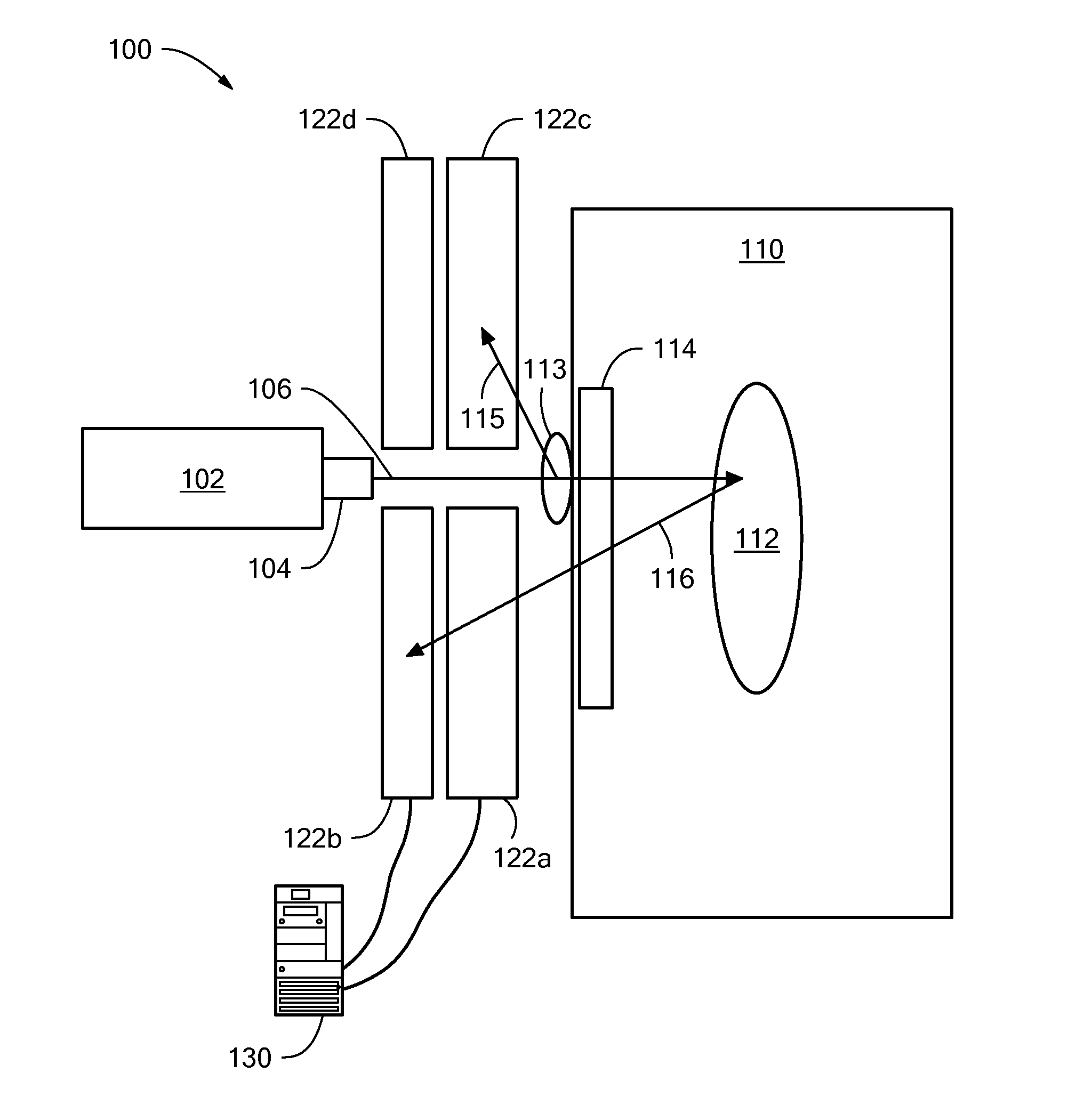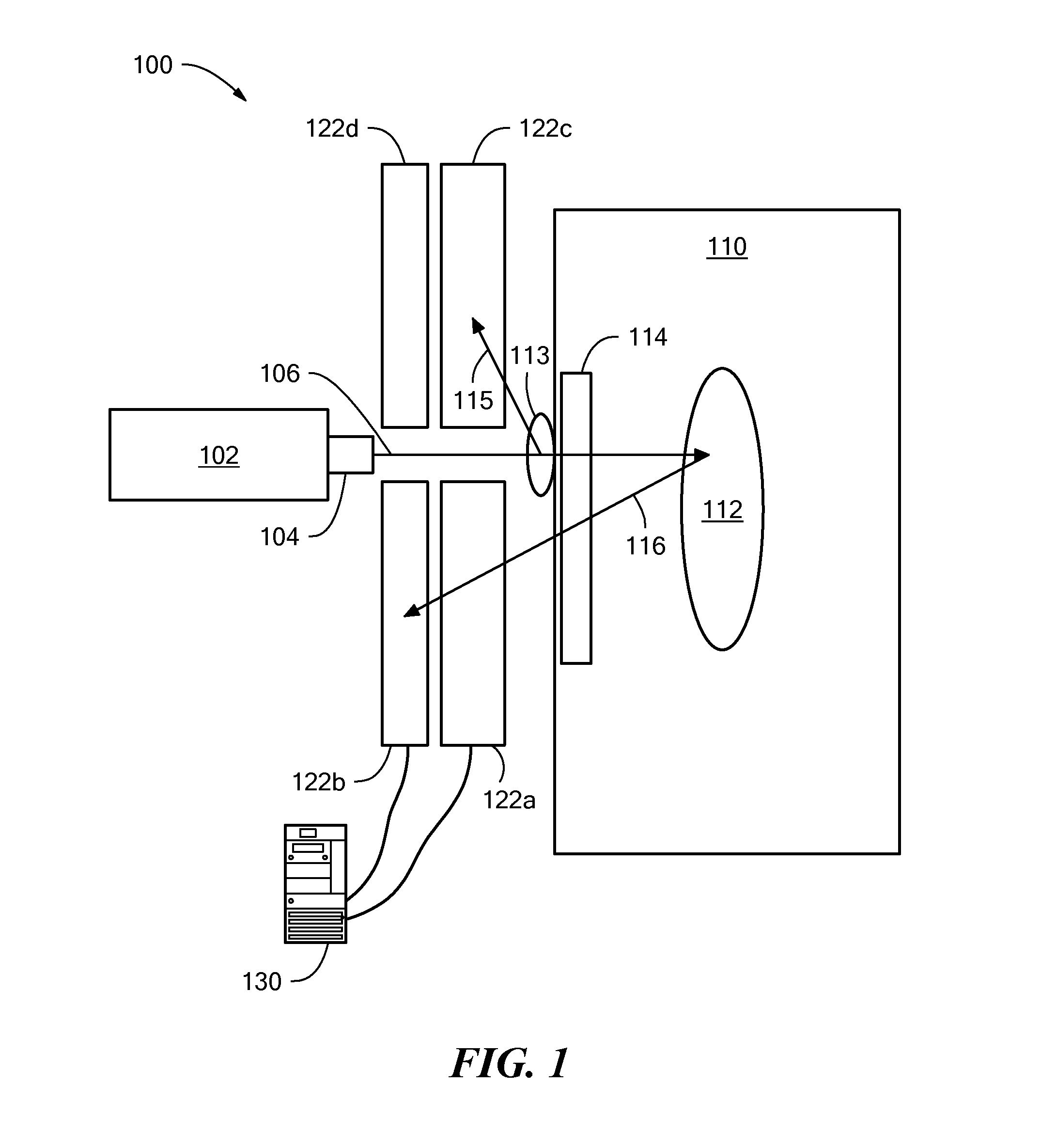Backscatter Energy Analysis for Classification of Materials based on Positional Non-Commutativity
a positional non-commutativity and backscatter energy technology, applied in the field of material classification systems and methods, can solve the problems of difficult to use the backscatter intensity, atomic number has proved elusive, and the reliable mechanism for using the energy resolution of x-ray backscatter properties of objects
- Summary
- Abstract
- Description
- Claims
- Application Information
AI Technical Summary
Benefits of technology
Problems solved by technology
Method used
Image
Examples
Embodiment Construction
[0014]In accordance with various embodiments of the present invention, methods are provided for characterizing regions within an inspected object wherein a lower-Z scattering material and a higher-Z material may both lie along a common line of sight. The methods have steps of:[0015]a. scanning the inspected object with penetrating radiation emitted by a source characterized by an energy distribution;[0016]b. detecting penetrating radiation scattered by the inspected object in a manner generating a first detector signal that distinguishes between materials of higher and lower effective atomic number under a first set of conditions with respect to the energy distribution of the penetrating radiation;[0017]c. detecting penetrating radiation scattered by the inspected object in a manner generating a second detector signal that distinguishes between materials of higher and lower effective atomic number under a second set of conditions with respect to the energy distribution of the penetr...
PUM
 Login to View More
Login to View More Abstract
Description
Claims
Application Information
 Login to View More
Login to View More - R&D
- Intellectual Property
- Life Sciences
- Materials
- Tech Scout
- Unparalleled Data Quality
- Higher Quality Content
- 60% Fewer Hallucinations
Browse by: Latest US Patents, China's latest patents, Technical Efficacy Thesaurus, Application Domain, Technology Topic, Popular Technical Reports.
© 2025 PatSnap. All rights reserved.Legal|Privacy policy|Modern Slavery Act Transparency Statement|Sitemap|About US| Contact US: help@patsnap.com



